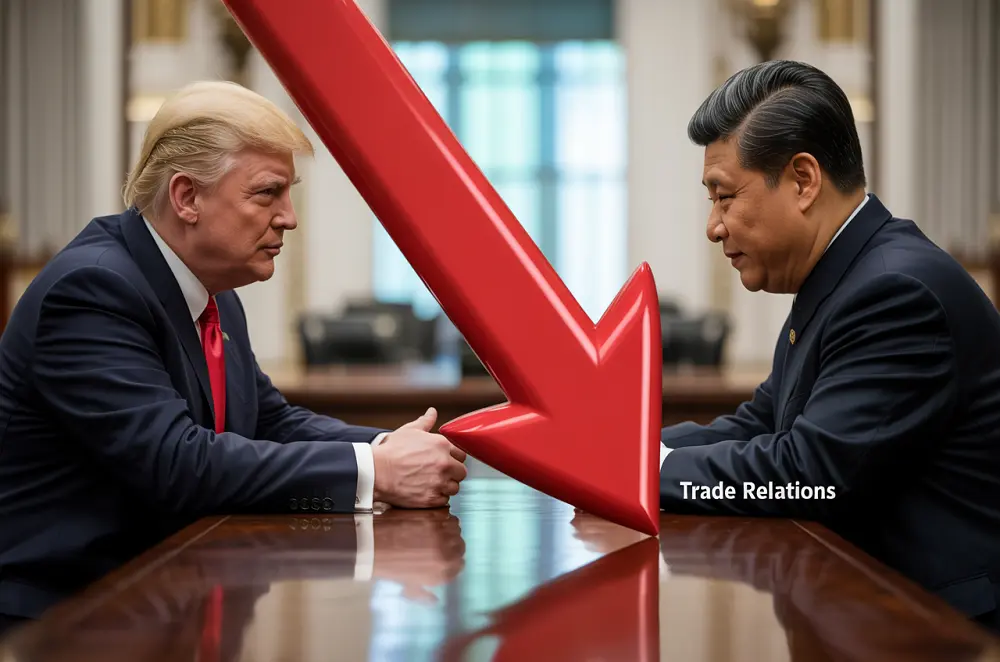Former US President Donald Trump has hinted at reducing tariffs on goods imported from China from 145% to 80%. The statement comes at a time when high-level trade talks are scheduled to be held in Switzerland between senior US and Chinese officials on May 10. Trump’s statement is being seen as a possible softening in the ongoing trade war between the two countries.
Trump, who is set to become US President again after the presidential election in 2024, wrote on his social media platform ‘Truth Social’: “80% tariff sounds right on China!” Although this is not an official policy, the statement has caused a stir in international business circles.
Table of Contents
- Background of the Tariff War
- Talks on May 10: Will the Stance Change?
- Market Response
- Relief for US Industries
- China’s Response
- What’s Next?
- Conclusion
Background of the tariff war
In February 2025, the US started the trade war by imposing a 10% tariff on imports from China. This tariff gradually increased to 145% by the end of April. In response, China also imposed tariffs on American products at a rate of up to 125%. This had a widespread impact on the trade activities of both countries.
In particular, the prices of American consumer goods, such as electronics, toys and household appliances, saw a sharp rise. American retail companies and exporters associations had repeatedly appealed to the government to provide relief in tariffs.
Talks on May 10: Will the stance change?
Join The Quantitative Elite Community here: The Quantitative Elite on Skool
Now that the top trade representatives of the US and China are going to meet in Switzerland on May 10, this statement of tariff reduction is being considered a sign of softening from the US side before the talks.
Finance Minister Scott Bessant and Trade Representative Jamieson Greer will participate in this dialogue from the US side, while Deputy Prime Minister He Lifeng will represent China. This dialogue is being held with the aim of reducing trade tensions between the two countries.
Although the Trump administration has made it clear that no final decision has been taken on tariff changes yet, the President’s public comments indicate that the US can now adopt a more flexible stance.
Market response
After Trump’s remarks, global markets reacted positively. London’s FTSE 100 index rose 0.3%, while Germany’s DAX index rose 0.6% to a record level. US stock markets also registered a slight rise.
In addition, Brent crude prices rose 1%, and gold prices also rose more than 3%, indicating that investors have hoped for a reduction in trade tensions.
Relief for US industries
If the tariff is brought down to 80%, it will provide great relief to US importers. Tariffs in sectors such as toys, clothing and consumer electronics had led to a sharp increase in costs. This not only increased retail prices, but also affected consumer demand.
Shipping and logistics companies have reported that orders from China to the US have fallen by more than 30%, which makes the impact of the tariffs clear.
China’s response
Beijing has not formally responded to the development, but Chinese media has described it as a “positive sign”. At the same time, government officials reiterated that China “prioritizes cooperation, but is also ready to defend its interests.”
China’s total exports grew 8.1% in April 2025, but exports to the US fell by 17.6%, indicating tensions between the two countries.
What’s next?
While Trump’s statement may be a step towards resolving the current trade complexities, analysts believe that a permanent solution will require intense dialogue and transparency. Unless both countries take decisions based on mutual understanding, this trade war will not end.
If a practical solution emerges between the two countries in the May 10 meeting, it will not only bring relief to global trade but will also provide stability to the global economic situation of 2025.
Grab your copy of Practical Python for Effective Algorithmic Trading here: Amazon – Practical Python for Effective Algorithmic Trading

